March 23 - 29, 2014: Issue 155
MINSHUKU
By George Repin
By George Repin
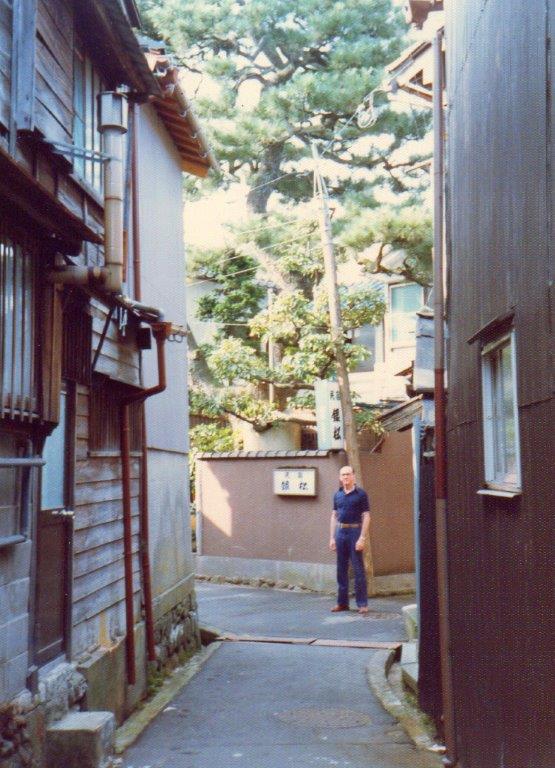 Minshuku provide
travellers to Japan an opportunity to meet local families and experience
traditional Japanese lifestyle in a home setting - and to see the types of areas
in which many Japanese live. Minshuku, generally, are small family run guest
houses in non-urban and rural areas offering a service to Japanese travelling
within their own country, rather similar to the “bed and breakfast” places
available in Western countries. In addition, some provide an evening meal. Often
they are in towns and villages too small to support a hotel or ryokan. Some
minshuku accept foreigners as guests, although there are not many of these,
because of the difficulties of language. An ability to communicate in Japanese,
even if only in a very limited way (ability to read signs and understand basic
phrases) is a great advantage. In recent times a limited number of larger
minshuku, with owners or staff able to speak English, have been established in
some larger towns to cater for the tourist trade – but these are rather
different from the traditional minshuku which may have only one or two rooms
available for guests.
Minshuku provide
travellers to Japan an opportunity to meet local families and experience
traditional Japanese lifestyle in a home setting - and to see the types of areas
in which many Japanese live. Minshuku, generally, are small family run guest
houses in non-urban and rural areas offering a service to Japanese travelling
within their own country, rather similar to the “bed and breakfast” places
available in Western countries. In addition, some provide an evening meal. Often
they are in towns and villages too small to support a hotel or ryokan. Some
minshuku accept foreigners as guests, although there are not many of these,
because of the difficulties of language. An ability to communicate in Japanese,
even if only in a very limited way (ability to read signs and understand basic
phrases) is a great advantage. In recent times a limited number of larger
minshuku, with owners or staff able to speak English, have been established in
some larger towns to cater for the tourist trade – but these are rather
different from the traditional minshuku which may have only one or two rooms
available for guests. Right: Minshuku Ginmatsu down an alleyway in Kanazawa
On arriving in a town and finding their way to the minshuku, often through narrow streets, after being greeted by the owner guests remove their footwear, which is left at the door, don slippers, provided by the owner to wear while on the premises and are taken to their room. This is a traditional Japanese room with paper walls, possibly a shoji screen and with tatami matting on the floor with virtually no furniture other than a table about one foot high and possibly several Zabuton cushions. Tatami matting is made of straw in sections 6 feet by 3 feet laid together. Slippers are removed before stepping on to the tatami. Only socks or bare feet are allowable on tatami which is very delicate and easily damaged. There may be a cupboard in which futon bedding is stored.
Traditional futon consists of a set of a Japanese mattress and a matching quilt. Guests themselves lay out the futon on the tatami when ready to sleep. Occasionally there may be a tokonoma which is a recessed space in which items of artistic appreciation are displayed.
On arrival at the minshuku the guest will have been told whether meals (breakfast and dinner) are taken with the family or are served in their room and at what times and, as a communal bath is used by all of those in the premises, the time the guest may have access. Some minshuku provide Yukata (kimonos) for use during the stay.
Bookings at minshuku can be made in advance. Arrival time is after 3 pm. and departure time is 10 am. All payments are made in cash.
Travellers often move from minshuku to minshuku using public transport such as trains, buses, ferries, funiculars and the like, seeing much of the country rarely visited by conventional tourists.
Photographs by George Repin in 1981
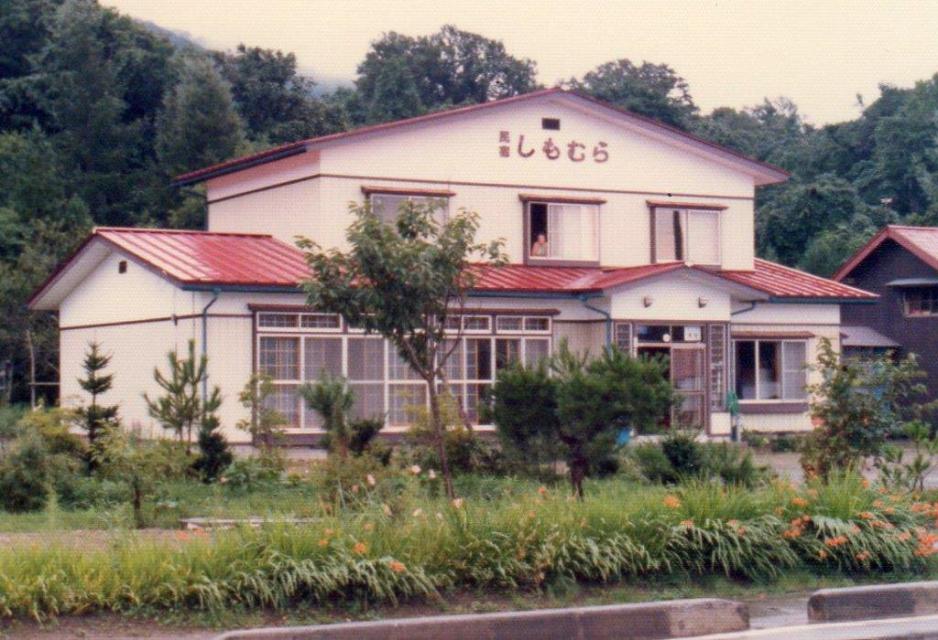
Minshuku Shimamura at Utarube facing Lake Towada.
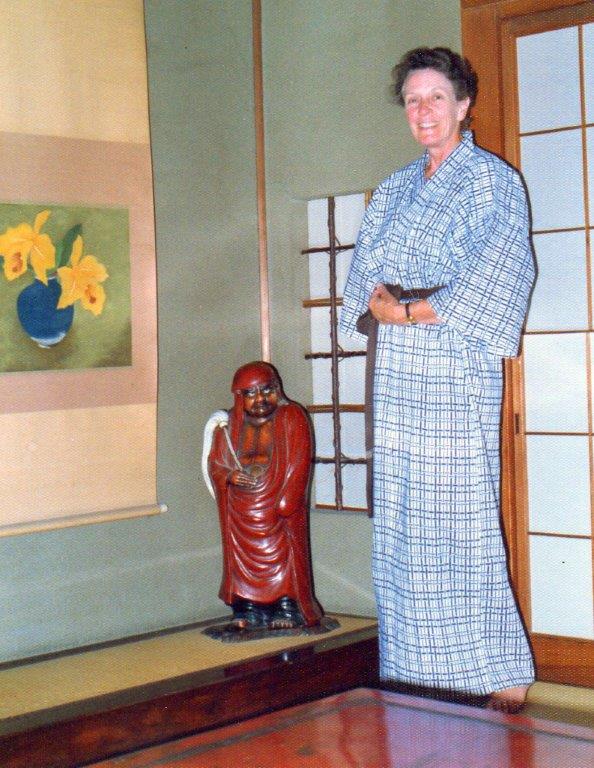
Tokonoma with woman in a yakata.
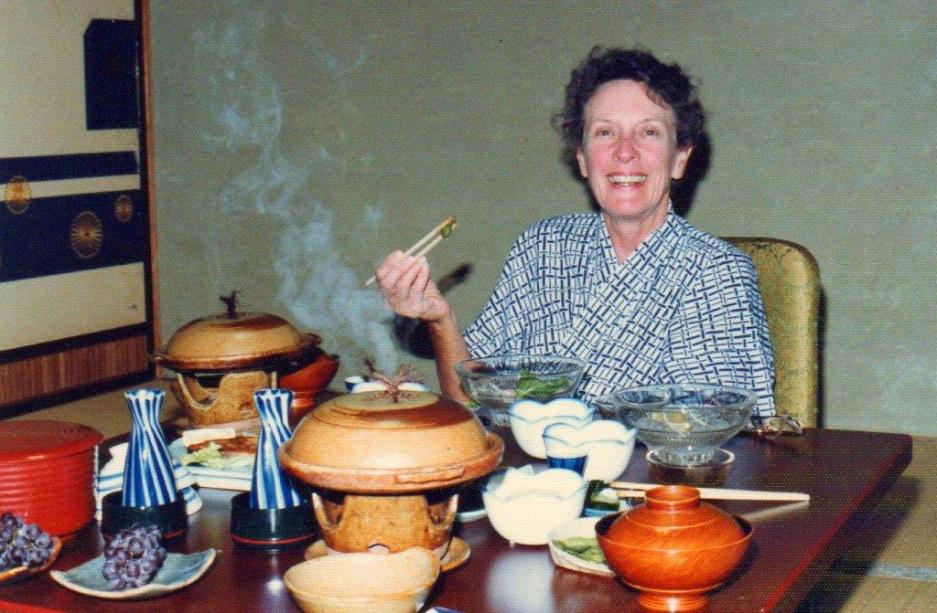
Dinner table in Sendai.
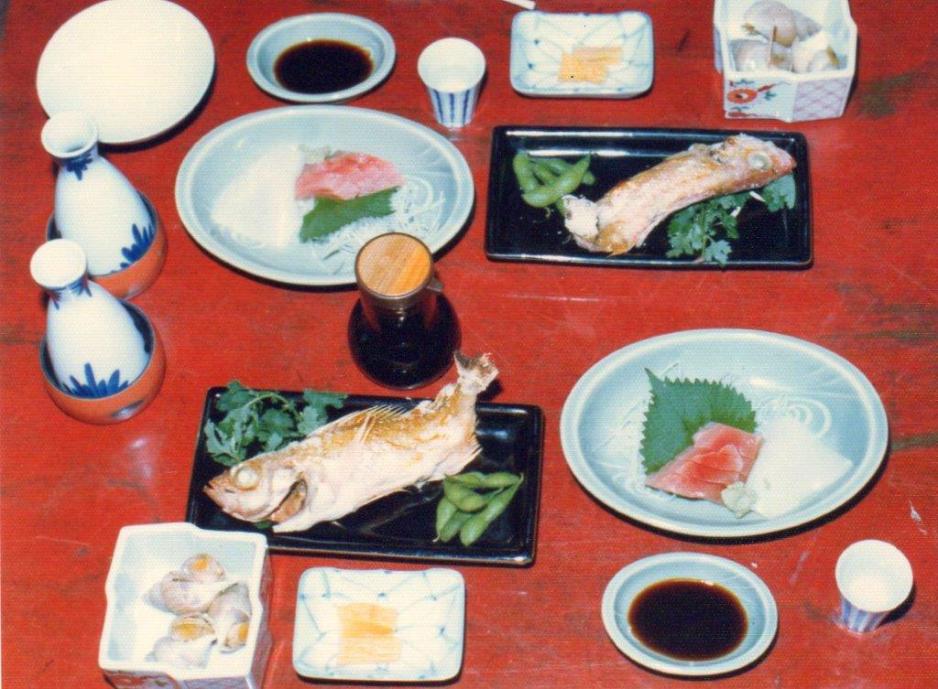
Dinner of a variety of seafood - Minshüku
Suimeiso, Toyama.
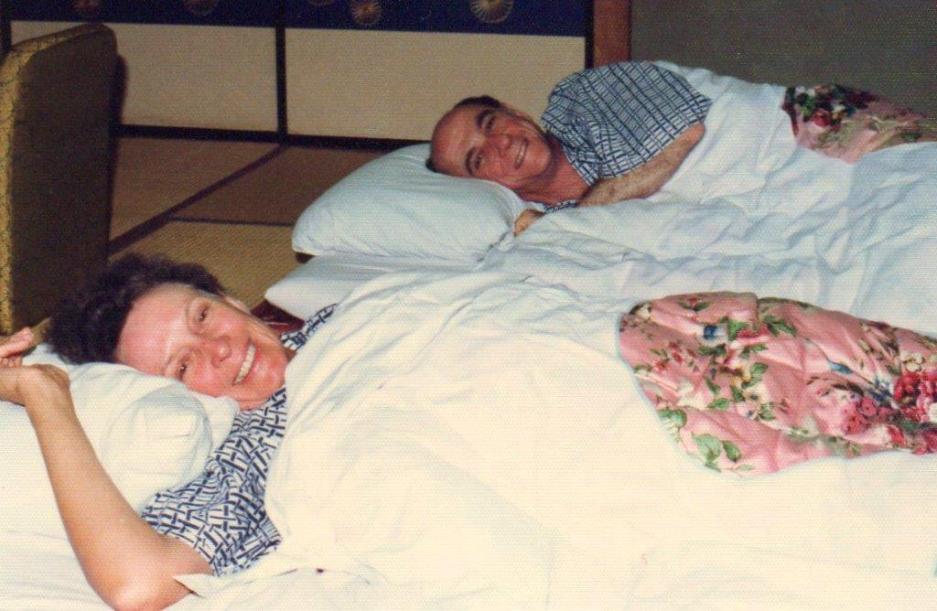
Settling down for the night in
futon.
All Photos by George Repin. Copyright George Repin 2014. All Rights Reserved.